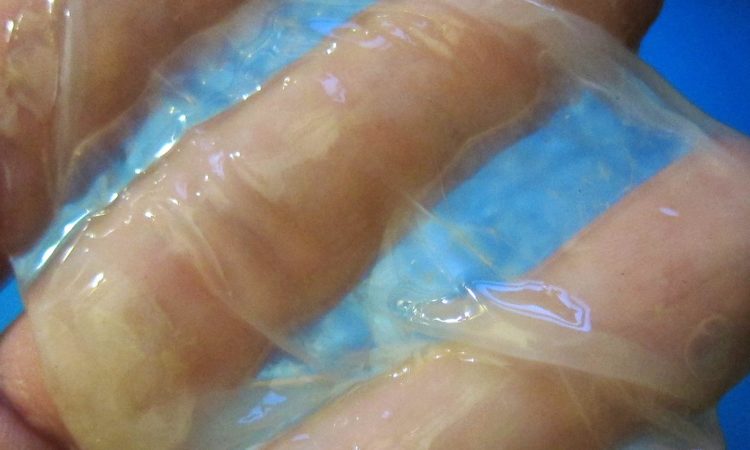Article Title: Resilient living materials built by printing bacterial spores
Authors: Lina M. González, Nikita Mukhitov and Christopher A. Voigt
Journal: Nature Chemical Biology (2019)
Microorganisms have evolved to perform a wide variety of useful biological functions. Biologists and engineers alike have used them to generate beneficial compounds for thousands of years, with beer and bread being some of the first applications. In the modern age, we have much better control over what we can program microbes to do. An intriguing new avenue is the development of so-called “living materials,” where living organisms are embedded within a material, thereby enabling the material to perform amazing new functions, such as sensing, chemical synthesis, and even energy harvesting. Examples of living materials can be found in nature – these include wood and bone where cells are mixed with inanimate structures to form strong, complex networks. Inspired by nature, researchers at MIT have printed the soil bacteria, Bacillus subtilis, into polymer gels to create a living material with the ability to heal wounds and eliminate the highly infectious bacteria Staphylococcus Aureas.
To create their living material, the researchers used 3D printing. However, typical materials and conditions used by 3D printers are toxic to cells. Common conditions include high temperature and UV light used for curing polymers – all of which aren’t great for sensitive microbes. To avoid this, scientists generally look for materials that are both conducive to 3D printing and non-toxic to microorganism, so-called bio-inks. The researchers here repurposed a 3D printer to mix two streams to form a bio-ink just before the printing occurs (Figure 1). The first stream was composed of a polymer that was “melted” at high temperatures, the second was a lower-temperature mixture of cell spores and media required for their growth.
The truly amazing part of this research was the idea to mix bacterial spores into the polymer. It’s useful to think of spores as bacteria seeds that can lie dormant for years before being “activated” once they sense conditions appropriate for growth; think like a microbial form of hibernation. Spores have been reported to survive for millions of years. The downside is that only certain bacteria are capable of sporulating. After testing various combinations of polymers and organisms, the researchers discovered that a bioink composed of agarose as the polymer and Bacillus subtilis spores provided the most consistent results and healthiest cells. Agarose comes from seaweed and is well-known to support cells in a non-toxic environment. A major benefit of agarose is that its transition from liquid to solid is entirely temperature dependent and does not require any curing agents like UV light or toxic chemicals – you simply cool it down! With the bioink functioning as desired, the researchers then moved towards investigating applications for their living material.
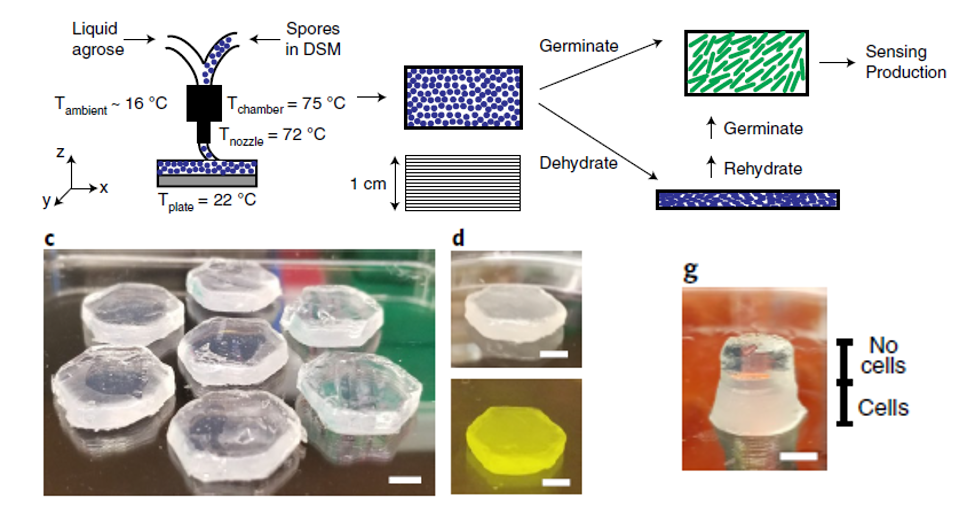
As an initial test for the living materials, the researchers programmed B. subtilis to respond to various small molecules by integrating biosensor circuits into the organism’s genome. In the presence of a certain molecule, the cells would express green fluorescent protein (GFP) which gives a visual confirmation that the molecule is there (Figure 2). This was shown using four different biosensor circuits to sense four molecules of interest, including xylose and vanillic acid.
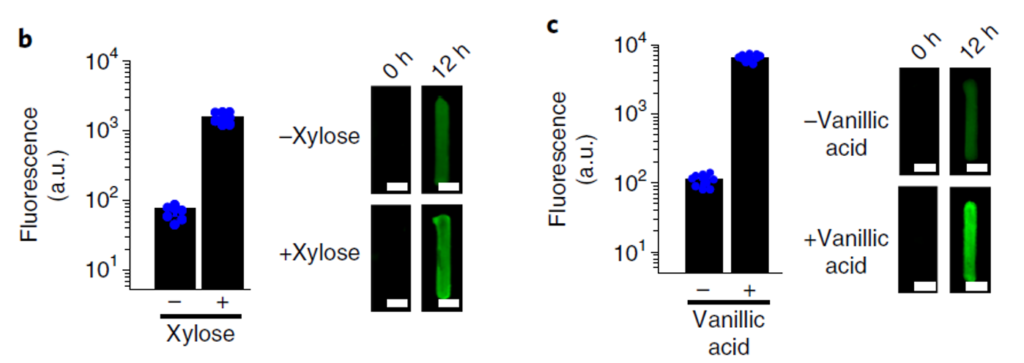
In addition, various experiments were performed to test the resilience of the spores within the 3D printed gel. The spores were able to survive extreme conditions, including temperatures up to 80◦C, UV light, X-rays, gamma radiation, desiccation, and many others (Figure 3). Gels could even be dried and then re-hydrated with the spores still remaining viable after multiple months! One could envision these gels being used as sensors and many other useful applications in remote locations where long-term storage is necessary. For example, a resilient gel that could sense toxins or infectious agents in a water source would be extremely valuable.
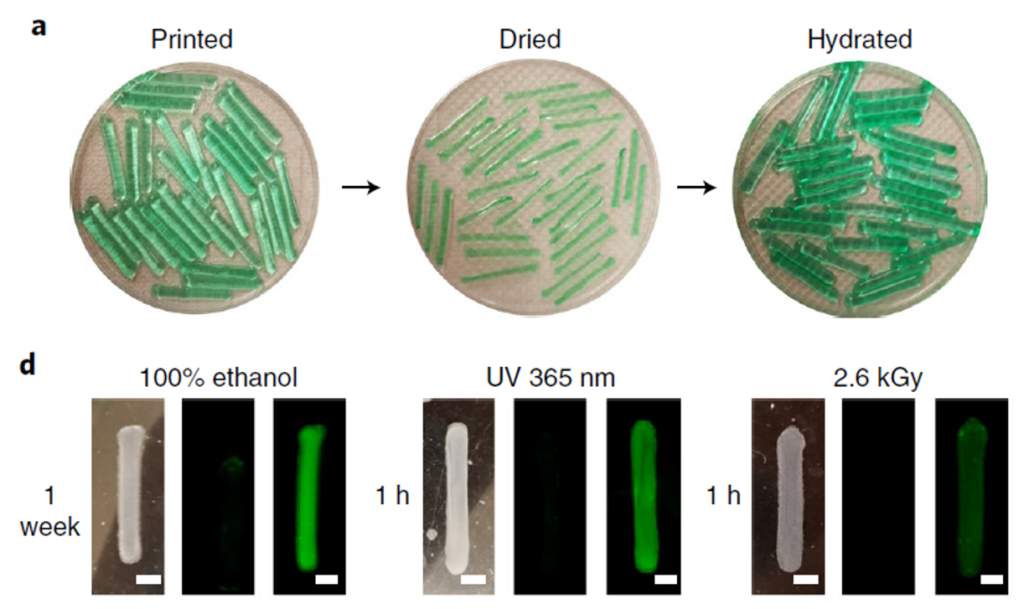
Detection of small molecules is no small feat, but the researchers sought to demonstrate a more complex sense-and-respond mechanism with their living material. This was accomplished by printing patches of gels containing bacterial spores that have been programmed to sense or kill the infectious organism, Staphylococcus aureas, which is the cause of Staph infections (Figure 4). Since working with humans requires additional regulation, the researchers used a wound model to simulate an infection and the healing response from their living material. When the spores were programmed to generate the antibiotics lysostaphin or TclE, the living material could effectively ward off the Staph infection (bottom right of Figure 4).
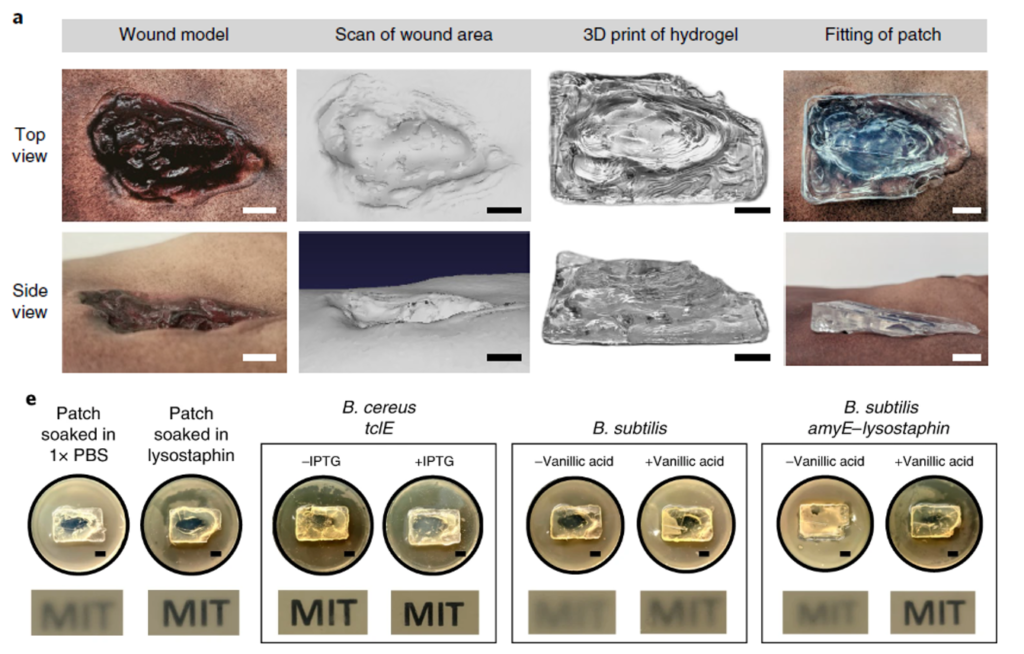
In summary, the research here showcases materials empowered by living functions that can endure long-term storage and environmental stressors. The key to the resilience was choosing sporulating bacteria that can be re-activated when needed. One can envision a multitude of brilliant applications, such as sensors for infectious agents and toxins, for these living materials so keep an eye out for more innovation in the future.
Featured Image source.

